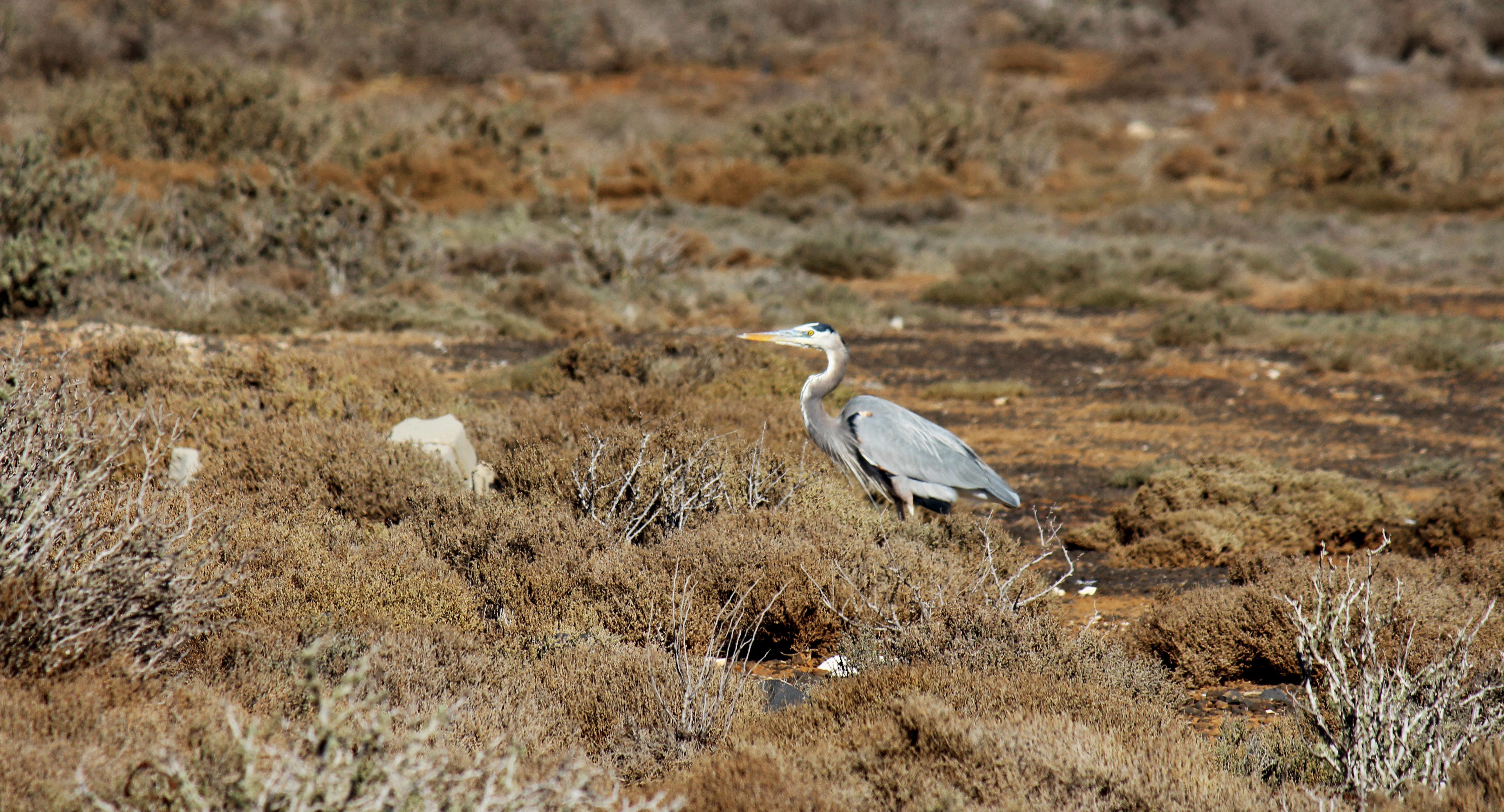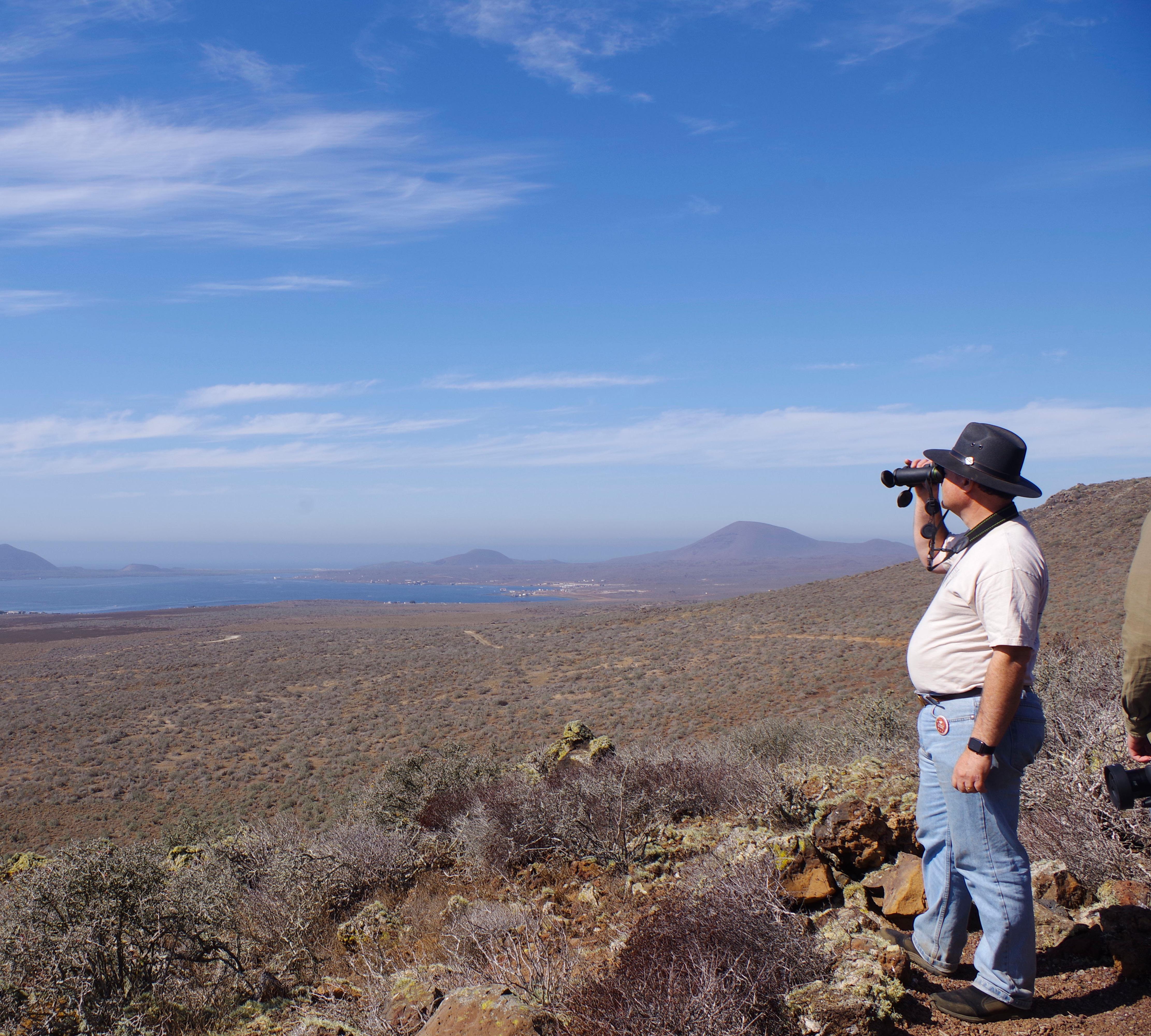
3 minute read
Monte Ceniza Nature Reserve
By Vitza Cabrera and Mirna Borrego
The Baja California peninsula is one of the largest in the world. It is a region that is home to a great diversity of flora and fauna and where the wonderful duality of sea and coastal scrubland intermingle to form surprising places. One of those places is San Quintin Bay and its volcanic valley.
Advertisement
Monte Ceniza Nature Reserve is found here. The volcano, which gives the reserve its name, was formed approximately 125,000 years ago, making it one of the oldest volcanoes in the valley.

Photo by Jorge Andrade.
Life here may seem scarce and desert-like, but if you take a close look, you will notice that there is a great diversity of species, colors and textures. In addition to this, the reserve is surrounded by the bay, a paradise that has the necessary traits that allow oyster farming; a delicacy of the ocean.

The San Quintin volcanic valley can be seen from Valle Tranquilo. Photo by Jonathan Villarreal.
Its vegetation is very particular, and it may seem harsh as thorny bushes and rosette-shaped plants abound. Nevertheless, this vast land dominated by coastal scrub is bathed by the sea breeze, allowing a countless number of unique plants to take over the environment. This includes some plants that are not found anywhere else in the world.
Some of the succulents and cacti that will amaze you are Anthony's liveforever, knife-leaved liveforever, coast hedgehog and barrel cactus.
The reserve is home to a great diversity of mammals and reptiles, so you must be very respectful as you go. During the day, it is easy to find traces of the rattlesnake, a threatened species in Mexico. If you look closely, you will be able to find the Baja California whiptail hiding in the sand near the wetlands; and if you are lucky and wait for the sunset, you will surely be able to see a coyote passing by.

San Quintin kangaroo rat. Photo by Antonieta Valenzuela.
All species depend on the protection and conservation of this site, but a particularly fragile species is the San Quintin kangaroo rat, which was thought to be extinct up until 2017 due to the agricultural expansion and the consequent fragmentation and loss of its habitat. As San Quintin is an important agricultural center, this situation has spread throughout the region in recent decades.
For those who love birds, this site is ideal to enjoy bird watching, especially between autumn and winter. For example, you will be able to see the black brant flying, a goose that makes its journey from Alaska to Ensenada every year, or the curious brown pelican, and of course the amazing golden eagle.

Blue herons can be seen in the reserve. Photo by Antonieta Valenzuela.
Like many of the areas of the bay, Monte Ceniza Nature Reserve is steeped in history. Some 8,000 years ago, hunter-gatherer-fishers roamed these areas, delighting in their beauty and using each of their valuable resources.
At least nine archaeological sites have been identified, but it is possible that there are many more. Walk carefully as you could find shells or even fragments of points or materials that were used thousands of years ago. Remember not to take anything with you as these are highly valuable elements of our historical heritage, so let other people discover these fragments of the past.

View from the Monte Ceniza station. Photo by Estefany Maya.
If you want to take a memorable memory with you, we invite you to go up to the Monte Ceniza interpretive station, which was built with the support of the surrounding communities. The station is in the center of the reserve and almost at its highest part. A small trail will lead you to a bench where you will be able to see the entire bay. Be sure to take a break and enjoy the wonderful view.
Monte Ceniza Nature Reserve

Photo by Laura Tamayo.
Location
San Quintin Bay, Baja California
Area
803 hectares (1984 acres
Date of certification
April 18, 2017
Type of certificate
Area Voluntarily Destined for Conservation

Photo by Antonieta Valenzuela.
♦ Vitza Cabrera and Mirna Borrego work as Tourism Projects Officer and Education and Community Outreach Officer, respectively.









